Elbow Injuries
The elbow is comprised of three joints, the humeroulnar, humeroradial, and proximal radioulnar joints. These joints work together to achieve flexion & extension at the elbow, as well as forearm pronation & supination.
One of the primary causes of elbow injury is repetitive strain or progressive overuse. This is common in those who perform repetitive tasks for work (hairdressers, chefs, builders) and those participating in sports requiring repetitive movement patterns and/or sustained forearm contraction (tennis, golf, cycling).
Like any injury, sudden and direct trauma to the elbow also compromises the integrity of the bony and soft tissue structures, resulting in pain and dysfunction.
The signs and symptoms typical of elbow injuries include:
- Pain
- Sensitivity
- Weakness
- Heat
- Swelling
- Tension
- Joint restriction and/or locking
- Clicking
- Grinding
The common neuromusculoskeletal diagnoses for injuries of the elbow include:
- Medial epicondylitis
- Lateral epicondylitis
- Proximal radioulnar joint strain
- Radial neck – annular ligament strain
- Radial collateral ligament strain
- Ulnar collateral ligament strain
- Biceps insertional tendinopathy
- Triceps insertional tendinopathy
- Forearm extensor muscle strain
- Forearm flexor muscle strain
- Olecranon bursitis
Depending on the diagnosis and the severity of the elbow injury, patients may respond well to a conservative manual approach involving:
- Soft tissue therapy
- Passive joint mobilisation
- Musculoskeletal dry needling
- Advanced taping techniques (rigid taping and/or kinesio taping)
- Progressive injury rehabilitation
- Date May 2, 2019
- Tags Chiropractic, Chiropractor, Desk postures, Elbow, Epicondylitis, Golfer’s elbow, Infraspinatus, Ligament tear, Mobilisation, Osteoarthritis, Stiffness, Stretching, Subscapularis, Supraspinatus, Tennis elbow, Tension, Teres Minor, Tightness, Treatment, Weakness

